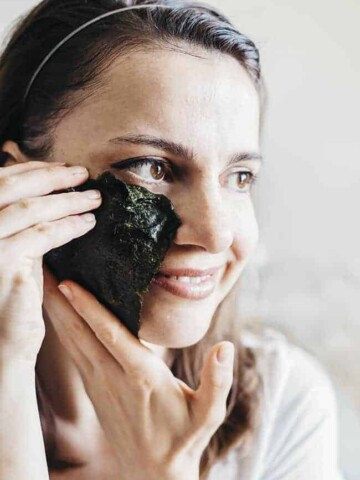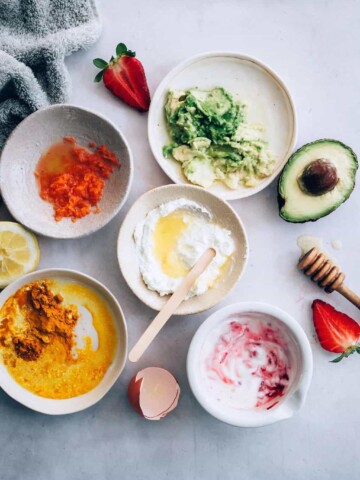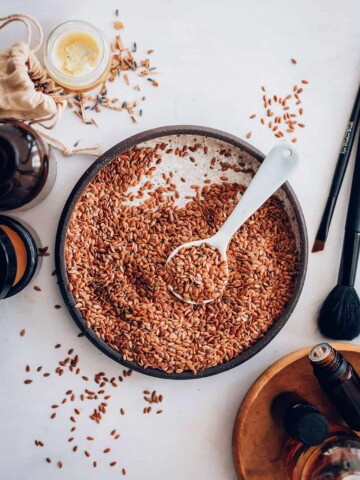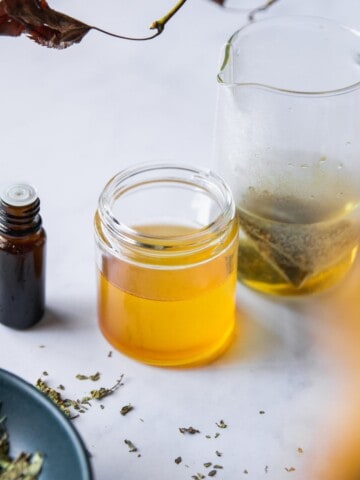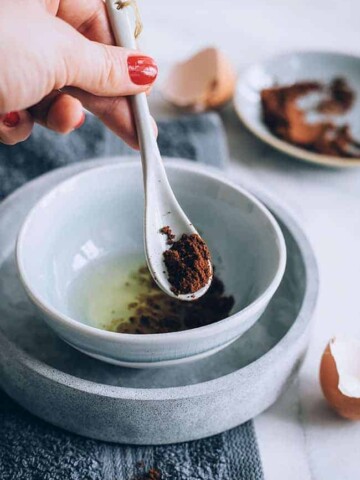In fact, is there anything more annoying that an unexpected breakout? The good news is that homemade face masks for acne can be an effective and fairly simple way to treat all types of acne, whether it is an occasional stress breakout or a chronic issue. Plus, spot treating acne with a mask for the occasional pimple can reduce inflammation and kill bacteria without wreaking havoc on other areas of the face that may not be affected.
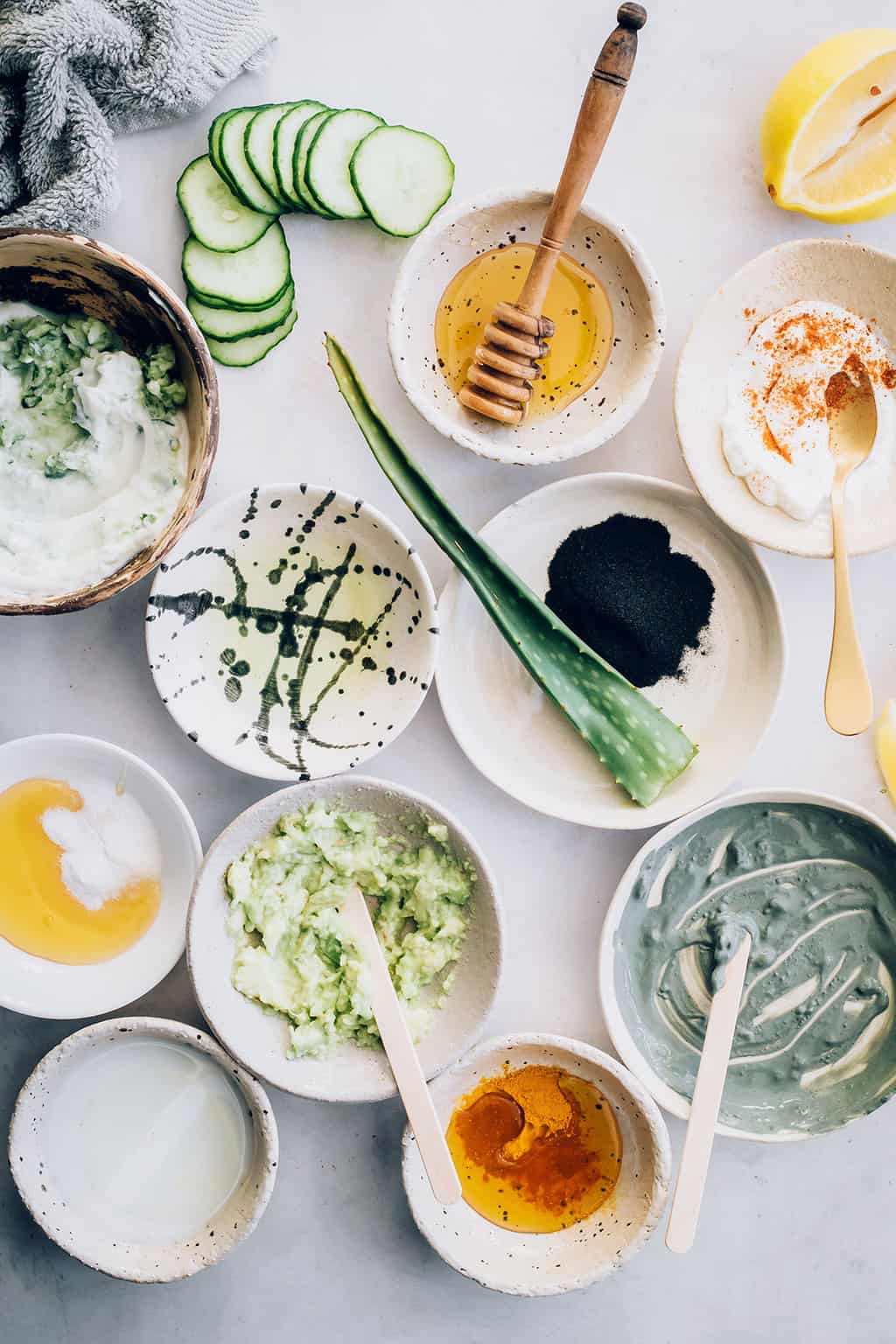
Jump to:
- Why use face masks for acne?
- 1. Avocado & Lemon Mask
- 2. Apple Cider Vinegar & Clay Face Mask
- 3. Charcoal & Aloe Face Mask
- 4. Garlic & Milk Face Mask
- 5. Cucumber & Yogurt Probiotic Acne Mask
- 6. Aspirin Spot Treatment Mask
- 7. Raw Honey Spot Treatment Mask
- 8. Tea Tree & Aloe Mask
- 9. Deep Cleansing Comedone Mask
- 10. Acne-Fighting Pomegranate Peel Scrub
- 11. Overnight Oat Milk Mask
- 12. Green Tea & Rosehip Sheet Mask
- FAQ
- Related
Meet the experts
Richard Torbeck, M.D., a New York City-based dermatologist
Olivia Rose, N.D., a Toronto-based naturopathic doctor and director of the Rose Health Clinic
Why use face masks for acne?
Acne is one of the most common skin conditions, affecting as many as 85% of Americans ages 12 to 24 and a significant number of older adults as well, per the American Academy of Dermatology Association (AAD) [source]. This chronic condition, which may consist of papules, comedones, skin redness, and cysts, can leave lifelong scars if it remains untreated. The good news is that myriad treatments are available—and you don't always have to go to the drugstore or your dermatologist to find some that work.
Acne-fighting masks can help prevent breakouts from occurring and work to balance oil production. "Face masks that are exfoliating can reduce acne by decreasing the creation of a micro plug of the hair follicle," explains Dr. Torbeck. "This plug can lead to what is called a comedone or acne bump, which may not be removed from face washing alone."
Masks can also be an interesting way to change up your normal routine, provide some variation, and help you relax, accompanied by a nice bath or a book.
"Washing your face daily is extremely important for anyone who suffers from acne. However, it’s not quite the same as a mask," says naturopathic doctor Olivia Rose. "A skin cleanser simply washes off debris and makeup, while a mask works more like a deep-acting treatment."

While there are many mask products on the market, it can be overwhelming to choose the appropriate mask for your particular skin issue. And you might even need multiple masks to address different areas of your face at various times.
Instead, you can make your own at-home masks with readily available ingredients at a fraction of the price. We’ve rounded up 12 recipes full of ingredients that are easy to locate, some of which may already be in your home.
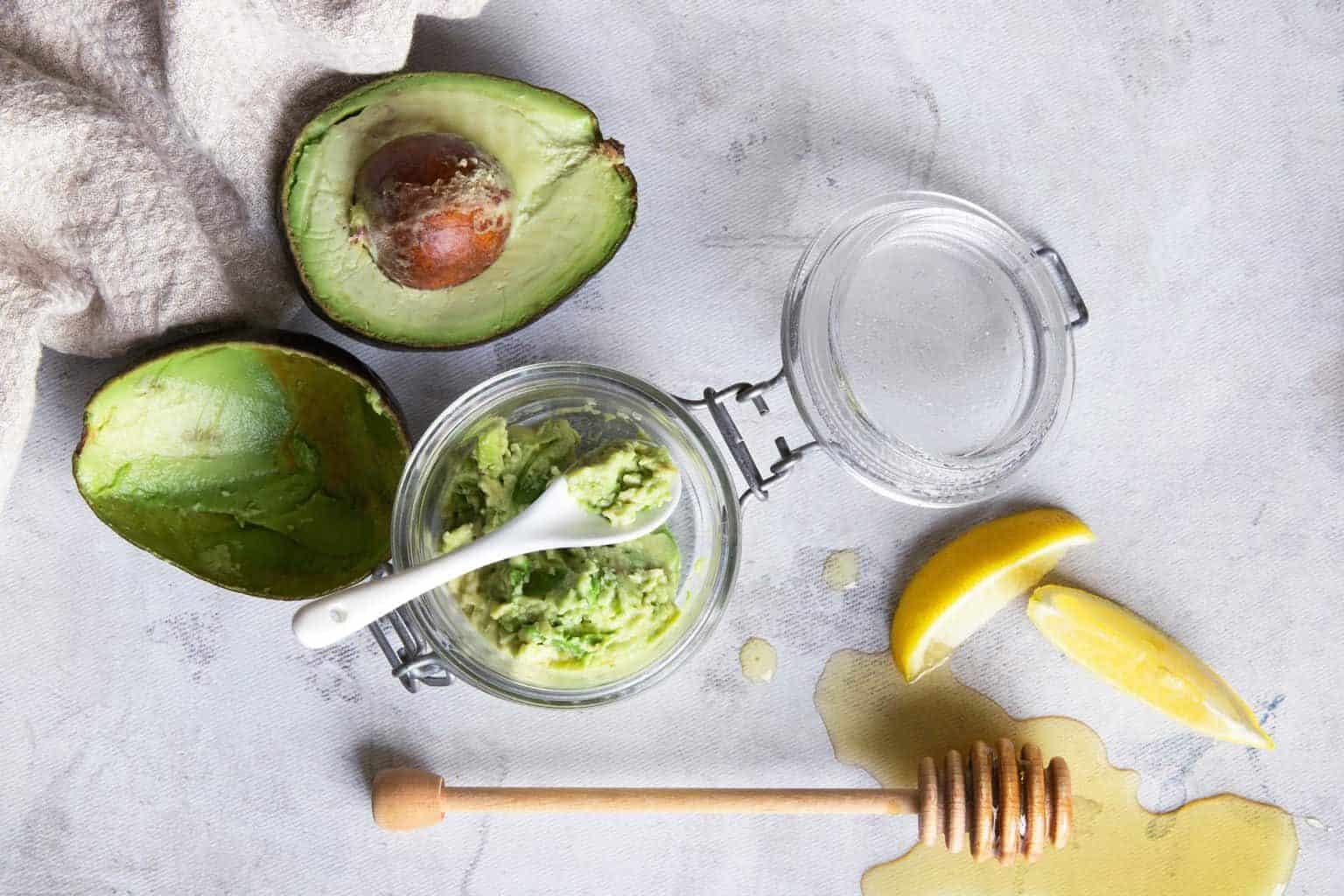
1. Avocado & Lemon Mask
Avocado stimulates collagen production [source], which aids in cell regeneration. It’s also loaded with anti-inflammatory hydrating fats that won’t clog pores. The honey is antibacterial [source], while the lemon juice lightens hyperpigmented areas.
—1 ripe avocado
—1 tablespoon organic raw honey
—Half of a lemon
Mash one ripe avocado until smooth, stir in the honey, and squeeze the half lemon into the mixture. Mix together thoroughly, and apply the mask as a spot treatment or to larger acne-prone areas. If you have sensitive skin, use less lemon or skip it altogether. Leave the mask on for 5–10 minutes.
A caution when using lemon juice: Although lemon has lightening and brightening qualities, it can also make the skin photosensitive [source]. Preferably use it at nighttime, rinse your face thoroughly afterward, and be prepared to use a zinc oxide 30+ SPF sunscreen the next day.
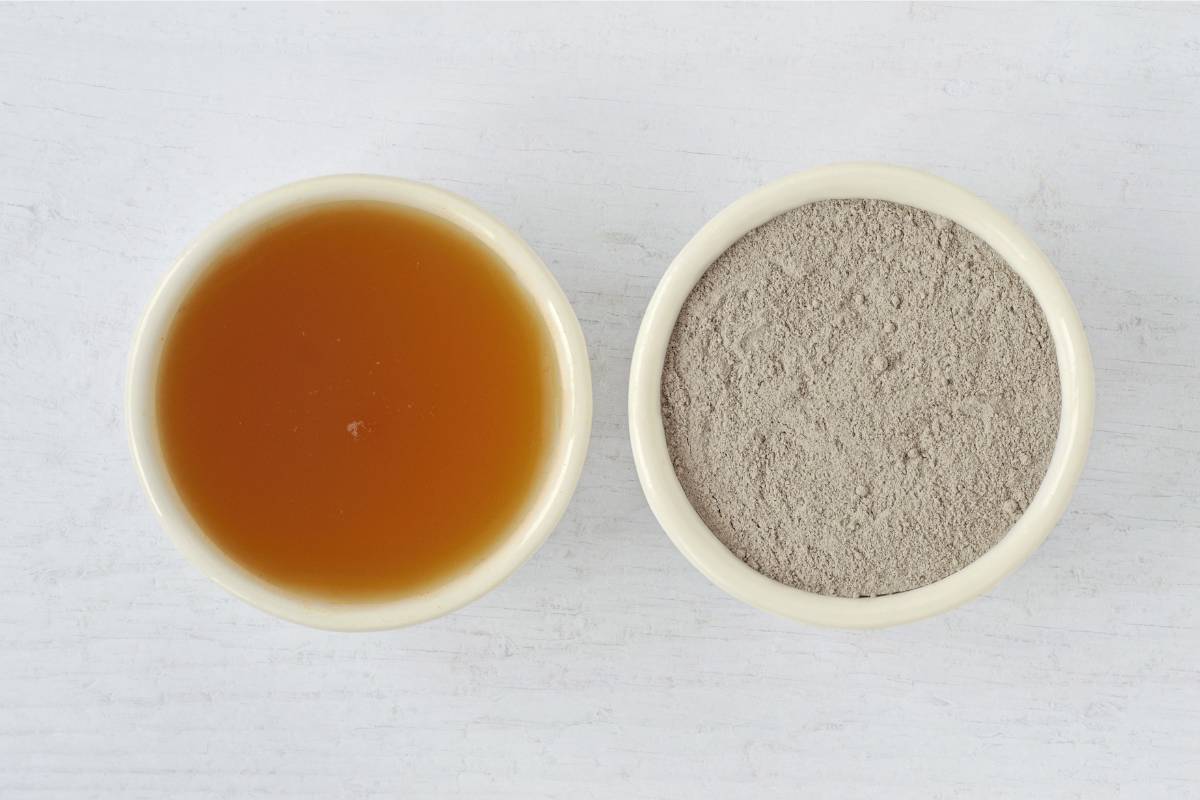
2. Apple Cider Vinegar & Clay Face Mask
Clay promotes collagen production [source] and detoxifies by absorbing excess oil and impurities deep down inside the pores. The natural acids in apple cider vinegar shrink pores to limit the secretion of excess oil and gently slough away dead skin cells.
Clay draws out impurities from the pores, while the natural acids in apple cider vinegar address acne by gently sloughing away dead skin cells.
—1 tablespoon bentonite clay
—1 probiotic capsule
—2 tablespoons raw apple cider vinegar
Combine the clay and probiotic powder in a small bowl. Add the ACV to make a paste. It’s okay to use more, if needed, to get a smooth, spreadable consistency. With clean fingers, spread the mixture over your face and let it sit for 15 minutes. Rinse with cool water and apply your usual moisturizer.
Combine the clay and probiotic powder in a small bowl. Add the water and apple cider vinegar to make a paste (add more water if needed).
With clean fingers, spread the mask over your face and let it sit for 10 minutes. Rinse with cool water and apply moisturizer. Repeat twice a week to maintain shine-free skin.
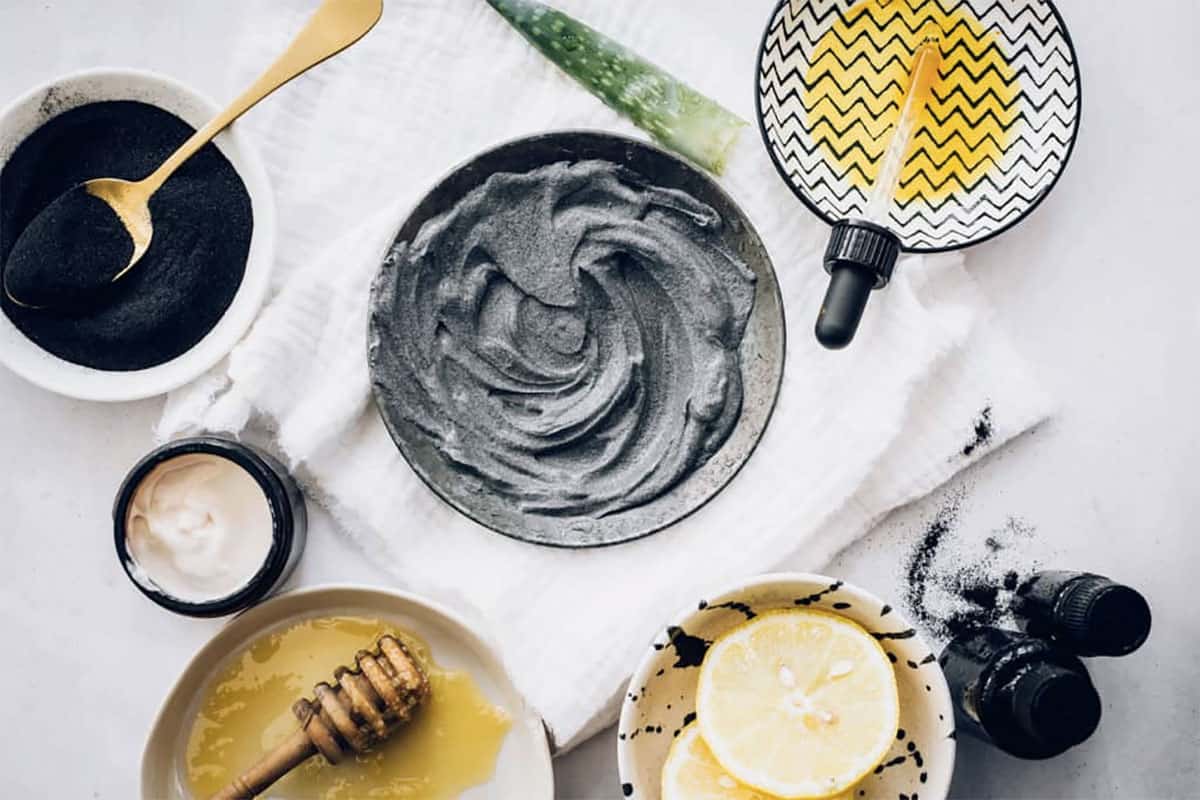
3. Charcoal & Aloe Face Mask
Combine charcoal with an aloe mask for a moisturizing treatment that won't clog pores or send oily skin into overdrive. Aloe skin benefits also include faster healing and reducing inflammation [source], so you can also use this mask to soothe itchy, irritated, or dry skin as well.
Charcoal absorbs excess oil, while aloe is soothing and anti-inflammatory, making it an ideal ingredient to add to any acne mask.
—1 tablespoon activated charcoal
—1 tablespoon aloe vera gel
—1 drop of tea tree essential oil
Mix the ingredients together in a small bowl. Using circular motions, work the charcoal mixture around your face for 1 minute, then let the mask sit for 10–15 minutes. Rinse thoroughly with warm water.
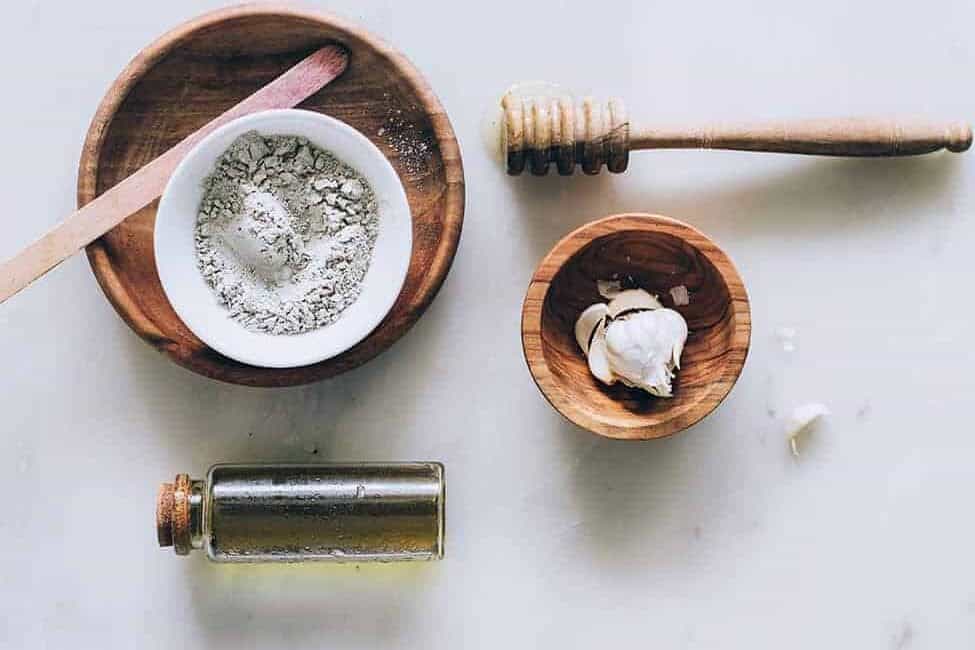
4. Garlic & Milk Face Mask
Garlic works to prevent clogged pores, kill off acne-causing bacteria, and reduce inflammation [source]. But it can sting if applied directly to the skin, so dilute it in water, jojoba oil, or aloe vera first. Jojoba hydrates without clogging pores [source], while the lactic acid in whole milk gently exfoliates [source].
—1 clove garlic, crushed and finely minced
—1 teaspoon jojoba oil
—2 tablespoons whole milk (can also use honey or aloe vera)
Combine the garlic and jojoba oil in a small bowl. Then slowly add the milk (or honey or aloe), and mix until you have a smooth consistency. Wear the mask for 5–10 minutes, then gently rub to exfoliate the skin as you rinse with warm water.
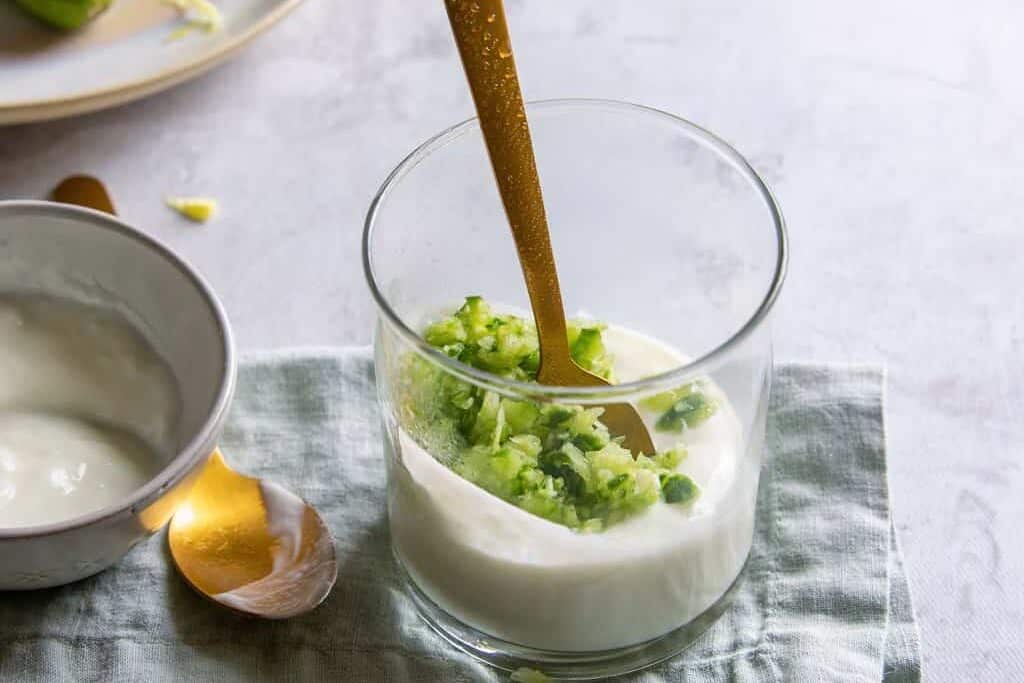
5. Cucumber & Yogurt Probiotic Acne Mask
This mask calms skin with cucumbers as a natural anti-inflammatory [source] and additional probiotics to nourish your skin's microbiome. Cucumber seeds are rich in potassium and vitamin E, which help reduce blemishes.
This recipe calms skin with naturally anti-inflammatory cucumbers and additional probiotics to nourish your skin microbiome [source]. According to dermatologist Dr. Amy Wechsler, the high levels of caffeic acid in cucumbers reduces swelling and inflammation. This mask feels especially good after a day spent in the sun.
Cucumbers have lightening agents as well as anti-inflammatory properties that will tone and hydrate the skin. This is a great mask if you're battling acne scars as well. Using ingredients that are cold out of the fridge will be super soothing to sensitive and irritated skin, too—so this is one that rosacea-prone readers can use!
The natural anti-inflammatory effects of cucumber give this mask a calming effect on skin. It also provides probiotics to nourish your skin’s microbiome.
—½ cucumber, pureed
—2 tablespoons plain yogurt
—1 probiotic capsule
Combine the ingredients in a small bowl and apply to a clean face with clean hands. Avoid the eye area. Leave the mask on for 15 minutes and then rinse with warm water. Follow with your usual toner and moisturizer.
Puree the cucumber (seeds and skin included!) and then mix in the yogurt. Apply the mixture to your face, and leave it on for 10 minutes before rinsing thoroughly.

6. Aspirin Spot Treatment Mask
Combine these acne fighters to tame inflammation and shrink a pimple fast—without leaving your skin dry or flaky. Aspirin's salicylic acid unclogs pores and calms redness. Yogurt's lactic acid dissolves dead skin while honey offers hydrating and antibacterial properties that help nix acne-causing bacteria.
—3 aspirin tablets, not enteric-coated
—½ teaspoon honey
—1 tablespoon plain yogurt
Crush aspirin with a spoon then mix with yogurt and honey to make a paste. Gently dab it on the zit, leave it on for 10 minutes, and then rinse with warm water. Use as a spot treatment once a day.
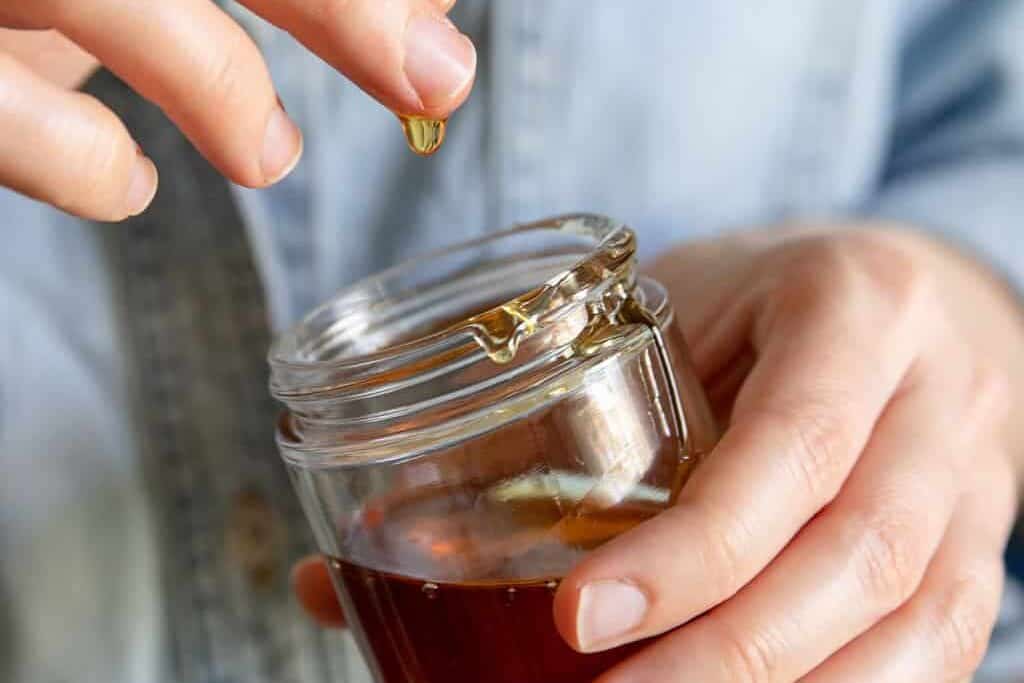
7. Raw Honey Spot Treatment Mask
One-ingredient treatments are our favorite! Honey has so many uses, and fighting acne is a powerful one. Just dab honey (manuka is ideal) directly on the blemish to not only fight bacteria but also to calm inflammation and redness. Leave it on for 10–15 minutes, and then rinse with warm water.
Honey is not only antibacterial but naturally unclogs pores as well. Using clean fingers, on a clean, dry face, apply small amounts of raw honey to your middle and ring fingers and gently pat on the skin where blackheads are present.
Repeat, concentrating on the chin, forehead, and nose areas, being careful to avoid the under-eye area as bruising can occur. Pat for 1–3 minutes total, not in the same area. Gently wash your face with warm water when finished.
Anti-inflammatory honey eases the redness and swelling that comes with acne. Plus, it's antioxidants speed healing while its antibacterial agents kill bacteria so skin doesn't become infected.
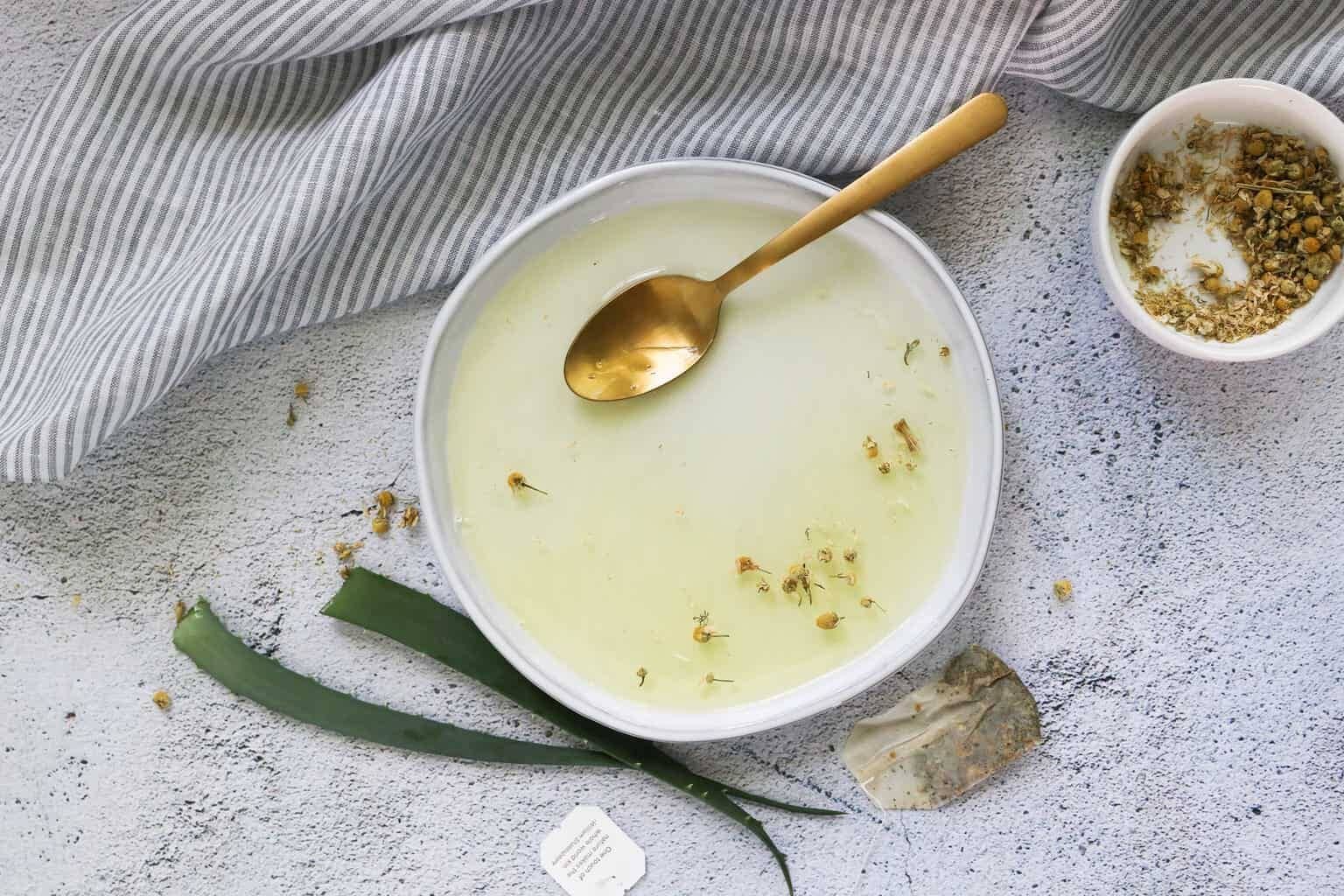
8. Tea Tree & Aloe Mask
Tea tree is one of the best essential oils to use against acne, thanks to its natural zit-fighting antibacterial properties [source]. The aloe soothes inflamed skin, while the tea tree attacks bacteria in the pores.
Blackheads are typically mixed in with active acne and sometimes form the breeding ground for pimples. This mask targets comedones and should be applied once a week at night since the lemon juice can make skin photosensitive (sun exposure may lead to rashes and skin hyperpigmentation).
—2 tablespoon aloe vera gel
—2 drops tea tree essential oil
—1 egg white
Whip the egg white in a small bowl, then add aloe gel and tea tree oil. Apply the mixture to your face with your fingertips or a facial brush. Leave it on for 10–15 minutes.
Beat the egg white until fluffy, then add in the clay and lemon juice and mix well. It will form a paste that you can apply to your t-zone or any other blackhead-prone areas. If it’s a bit thick, which will depend on the type of clay you use, add a ½ teaspoon of water.
After 10 minutes, when it’s dry and cracking on your face, rinse with warm water. Follow with the appropriate nighttime facial oil or moisturizer.
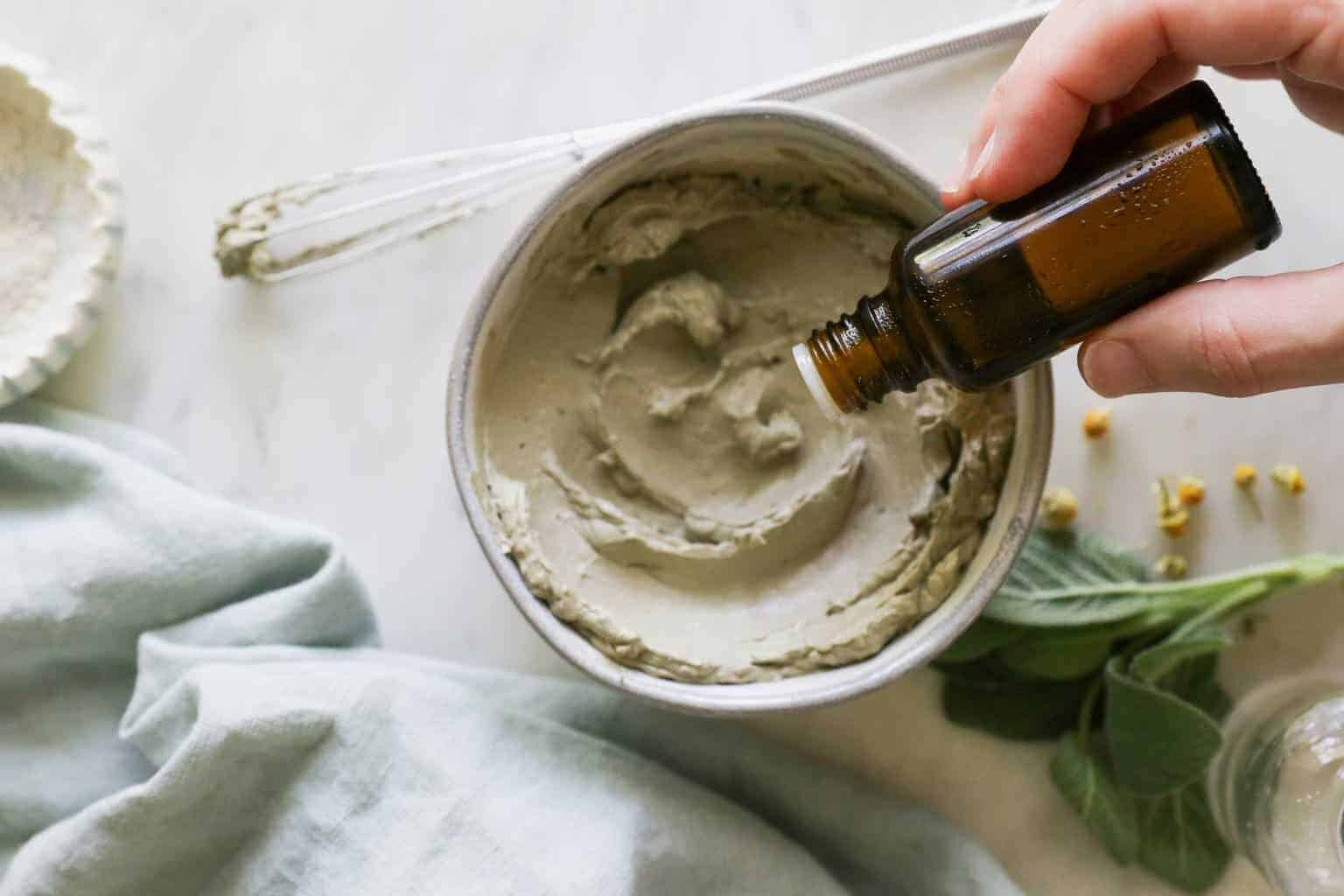
9. Deep Cleansing Comedone Mask
Regularly using a deep cleansing acne mask designed to control oil accumulation in your pores is crucial to keeping blackheads at bay. This mask should be applied at night once a week since the lemon juice can make skin photosensitive (caution with sun exposure, especially if you have a history of photosensitivity, as it may lead to skin hyperpigmentation).
—1 egg white
—½ teaspoon bentonite clay
—¼ teaspoon lemon juice
Beat the egg white until fluffy, then add in the clay and lemon juice and mix well. It will form a paste that you can apply to your t-zone or any other blackhead-prone areas. If it’s a bit thick, which will depend on the type of clay you use, add a ½ teaspoon of water.
After 10 minutes, when it’s dry and cracking on your face, rinse with warm water. Follow with the appropriate nighttime facial oil or moisturizer.
Beat the egg white until fluffy and then add in the clay and lemon juice and mix well. It will form a paste that you will apply to your t-zone area or any other areas prone to blackheads.
If it's a bit thick, which will depend on the type of clay you use, add a ½ teaspoon of water. After 10 minutes, rinse with warm water. Follow with an appropriate nighttime facial oil or moisturizer.

10. Acne-Fighting Pomegranate Peel Scrub
Did you know that pomegranate peel has acne-healing properties? Along with the many nutrients it contains [source], it is a powerful antioxidant, anti-inflammatory, and bacterial inhibitor [source].
You can DIY your powder this way: When the seeds have been removed, cut the peels into small pieces, and place them in a dehydrator or roast them on a low heat of 145°F on parchment-lined baking pans.
Roast the peels until they are dry, and then remove them to cool. Place the dried peels in a blender or grinder and mix well until you have a powder.
How to use your pomegranate peel powder:
—2 teaspoons pomegranate peel powder
—Rosewater
Using 2 teaspoons of powder, slowly add enough rosewater to form a paste. Place the paste directly on blemishes as a spot treatment.
Leave it on for 5 to 10 minutes, and then rinse with warm water. This can be done as needed or 1 to 2 times a week.
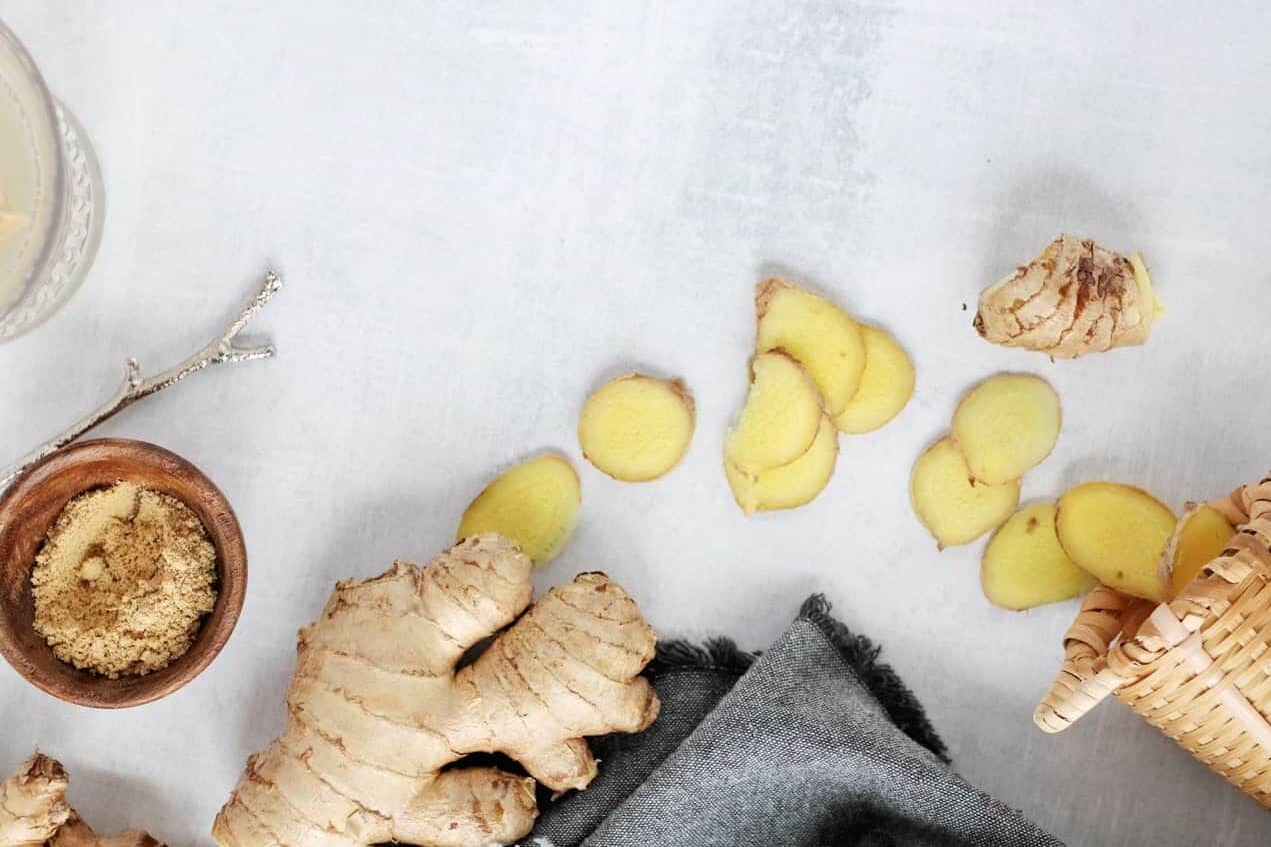
11. Overnight Oat Milk Mask
Oats are a mainstay in my pantry/medicine cabinet. Ground oats are incredibly soothing when it comes to dry, itchy, irritated skin [source]. I don't recommend leaving ground oats on your face overnight (the mess!), but some oat milk will work just as well. Toss in a little soothing ginger root oil and purifying blue tansy oil, and you've got yourself an ideal overnight face mask.
—2 tablespoons unsweetend oat milk (to make your own, combine ¼ cup oats and ¼ cup water in a food processor. Blend on high until smooth, then strain out the liquid)
—2 drops ginger root essential oil
—3 drops blue tansy oil
Combine oat milk and essential oils in a small bowl, then whisk well. Using a cotton ball, apply the mask to clean skin. Leave on overnight and rinse off in the morning.
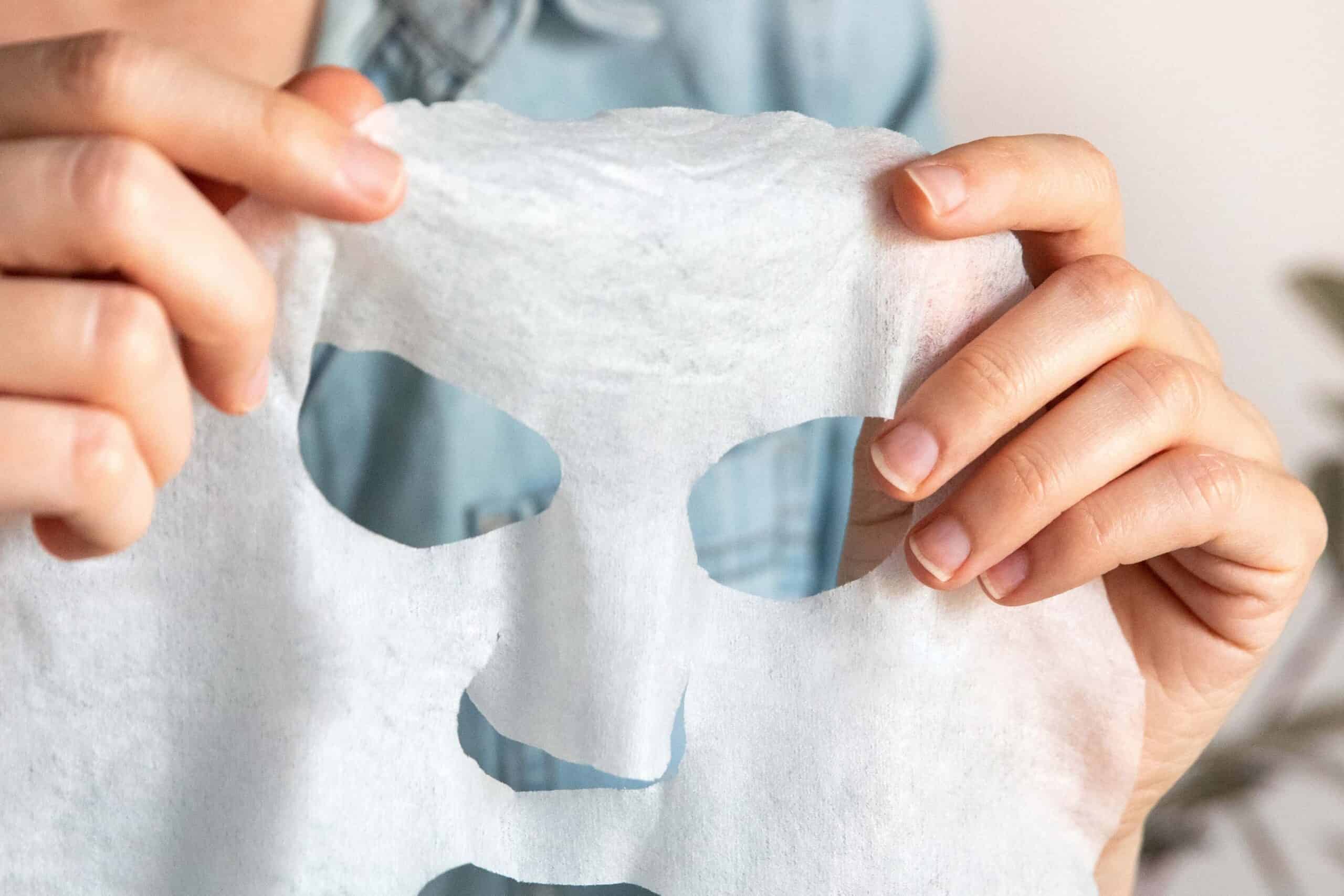
12. Green Tea & Rosehip Sheet Mask
I love using sheet face masks for acne because they hold targeted ingredients against the skin, so you never have to worry about melting, sliding or drying fiascos while you wait. This sheet mask uses rosehip oil to nourish and rejuvenate skin while green tea and rosewater soothe redness and irritation.
—2 tablespoons rosewater
—3 teaspoons strongly-brewed green tea
—½ teaspoon rosehip oil
—1 pre-cut cotton sheet mask
Combine the ingredients in a small bowl and whisk well. Unfold your sheet mask (if you don't have a pre-cut sheet mask, feel free to use a paper towel with little holes cut out where the eyes, nose and mouth should be) and place it in the bowl for 60 seconds to soak up the rosewater mixture.
Give it a gentle squeeze to remove any excess liquid, then place over your face. Let sit for 10 to 15 minutes, then remove and rinse with water. Repeat 1 to 2 times a week.
FAQ
Acne is one of the most common skin conditions, affecting as many as 85% of Americans ages 12 to 24 and a significant number of older adults as well. This chronic condition, which may consist of papules, comedones, skin redness, and cysts, can leave lifelong scars if it remains untreated.
Keep your skin clean, especially after a workout, and avoid touching it. Use skincare designed for acne-prone skin and include face masks in your routine. Have a look at your diet and avoid inflammatory foods.
Aloe vera, lemon juice, essential oils and baking soda can all be used as natural remedies against scars. Learn more about each one here.
Face masks work to deep clean the pores after washing off debris and makeup. Ingredients such as tea tree oil, activated charcoal, bentonite clay, garlic and aspirin are ideal for acne homemade face masks, and all the above recipes are valid choices for your skincare routine.
Related
Whether your skin is acne-prone or not, homemade face masks should be a part of your regular routine. Here are some more options for you to try:
This post was medically reviewed by Dr. Jennifer Haley, a board-certified dermatologist with extensive experience in medical, cosmetic, and surgical dermatology. Learn more about Hello Glow’s medical reviewers here. As always, this is not personal medical advice, and we recommend that you talk with your doctor.
218

